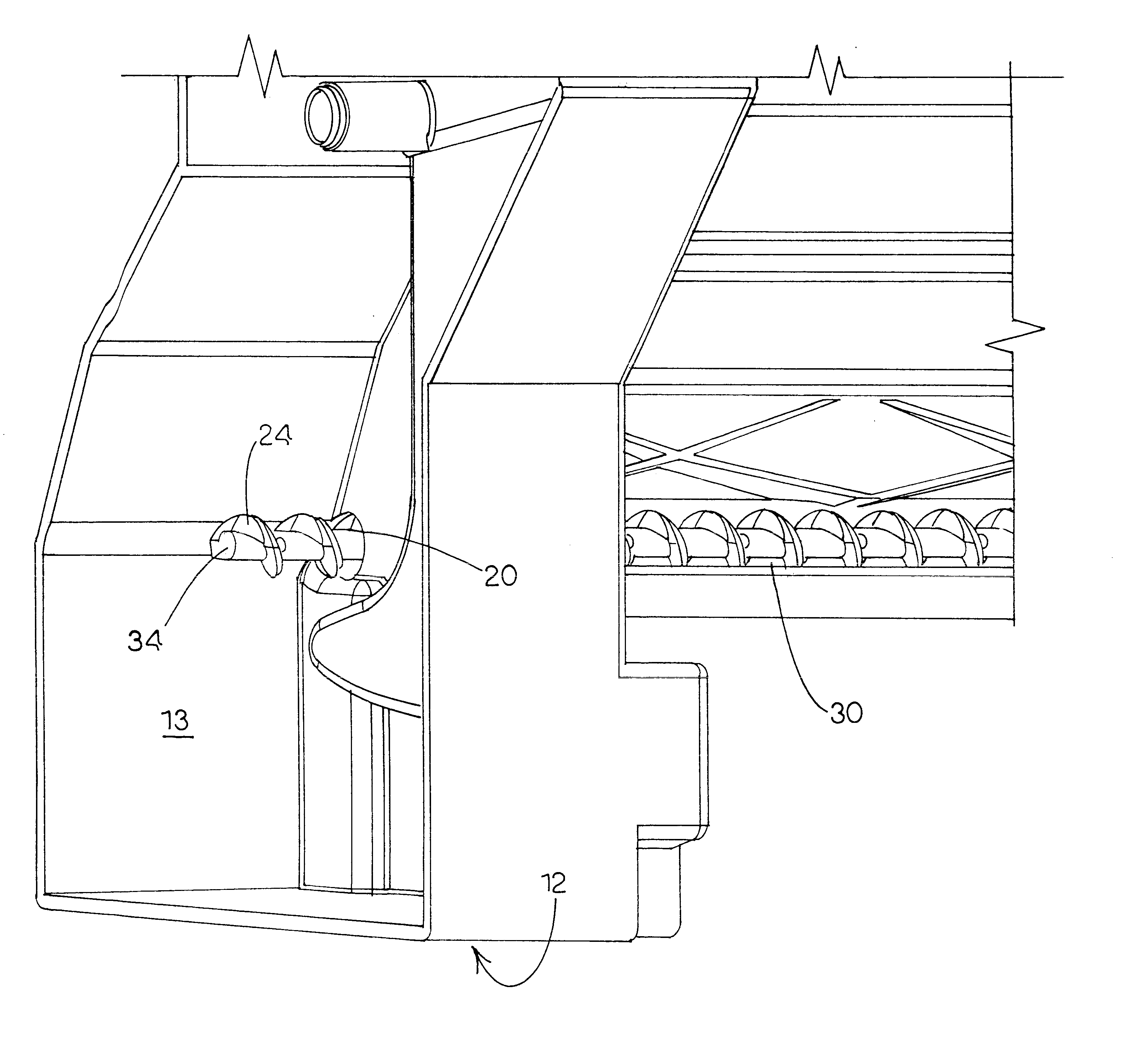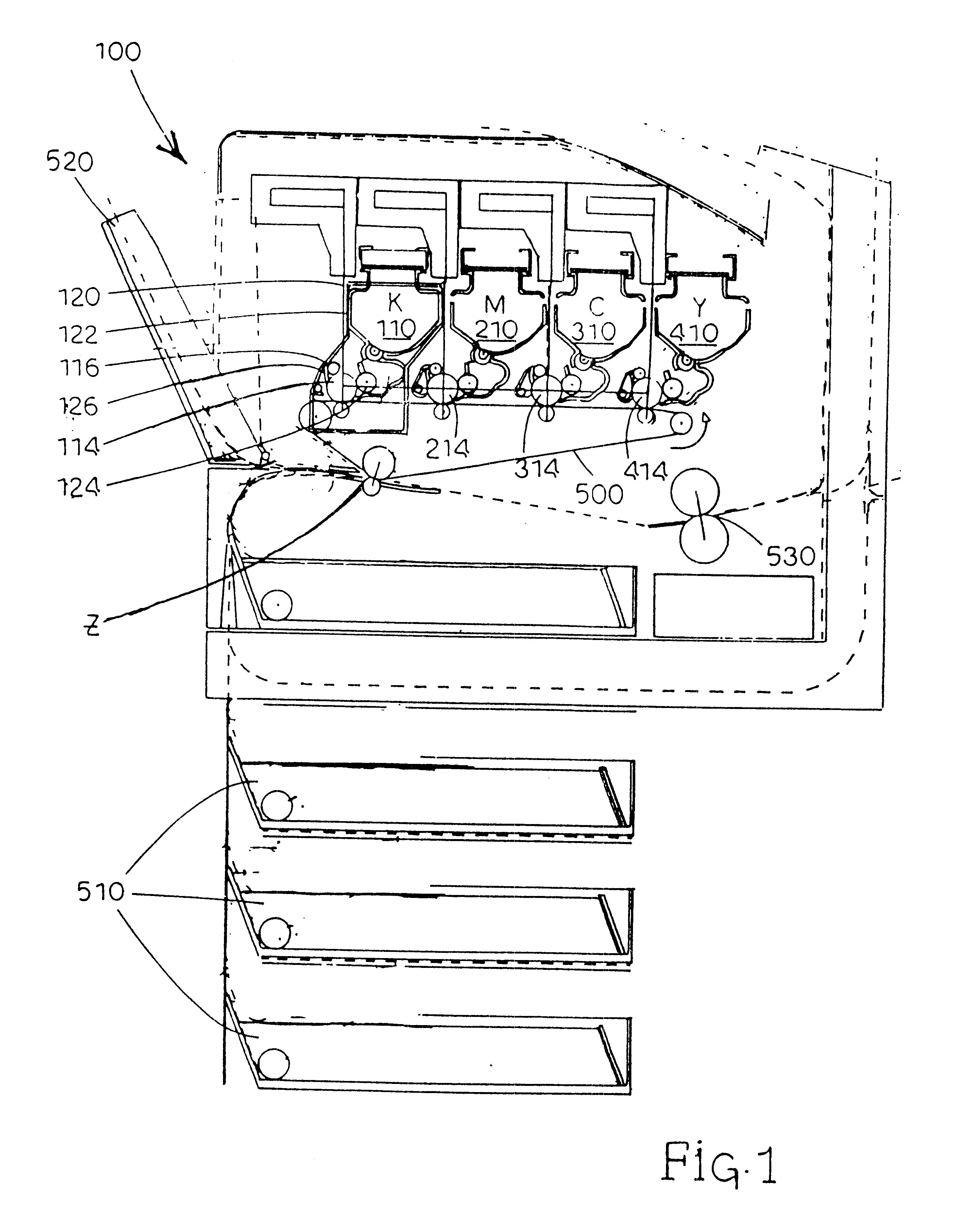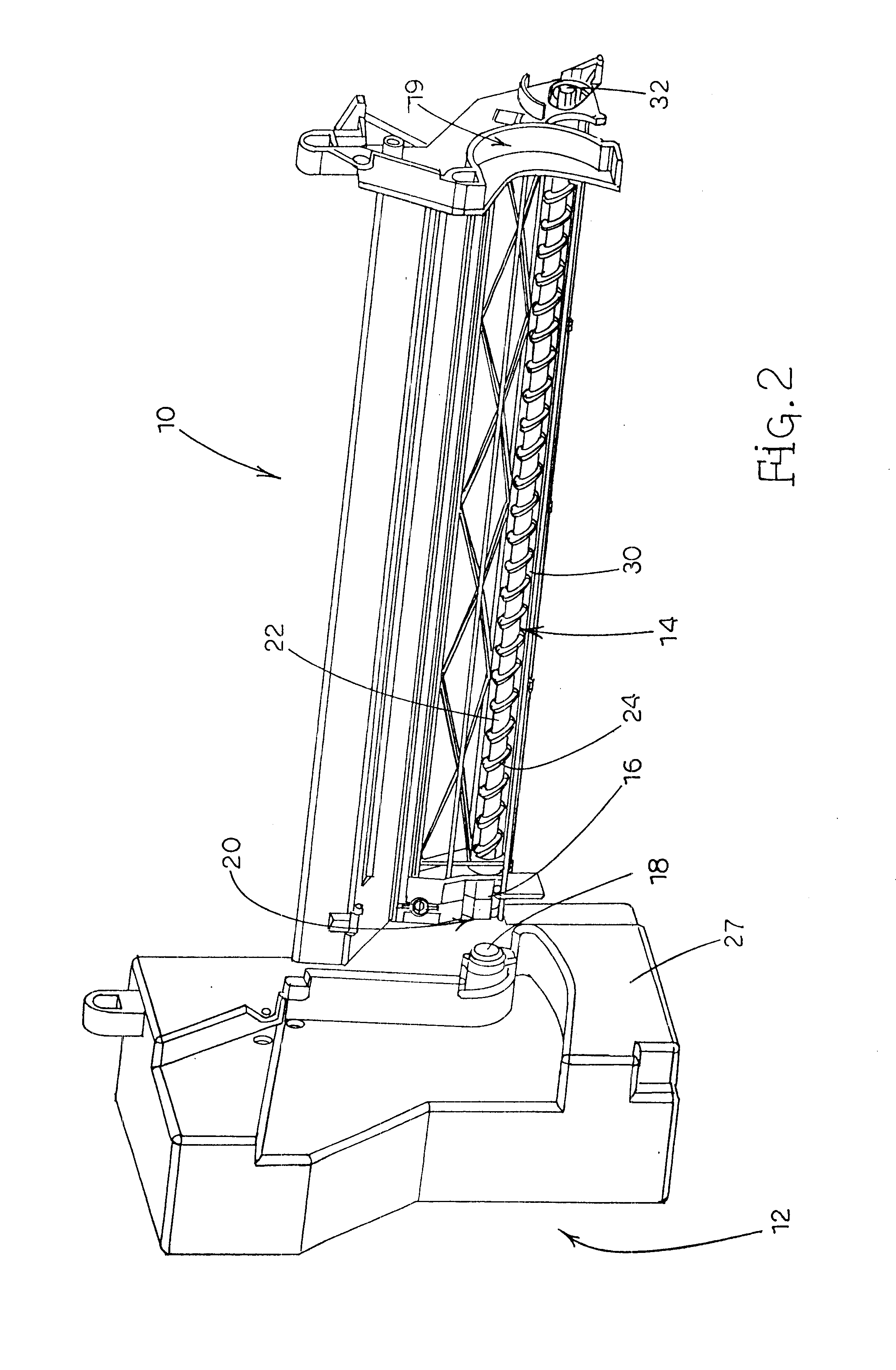Conveyor and waste toner reservoir for an image-forming apparatus
- Summary
- Abstract
- Description
- Claims
- Application Information
AI Technical Summary
Benefits of technology
Problems solved by technology
Method used
Image
Examples
Embodiment Construction
FIG. 1 illustrates the basic elements of an image forming apparatus and is incorporated for an understanding of the overall electrophotographic image forming process. A four cartridge color laser printer is illustrated as 100, however one skilled in the art will understand that the present invention is applicable to other types of image forming devices using toner for printing through a photoconductive drum. The image forming apparatus, generally designated 100, includes a plurality of similar toner cartridges 110, 210, 310, and 410. Each toner cartridge is of a similar construction but is distinguished by the toner color contained therein. In one embodiment, the device includes a black (K) cartridge 110, a magenta (M) cartridge 210, a cyan (C) cartridge 310, and a yellow (Y) cartridge 410. Each different color toner forms an individual image of a single color that is combined in layered fashion to create the final multi-colored image. The order of the cartridges may vary and is not...
PUM
 Login to view more
Login to view more Abstract
Description
Claims
Application Information
 Login to view more
Login to view more - R&D Engineer
- R&D Manager
- IP Professional
- Industry Leading Data Capabilities
- Powerful AI technology
- Patent DNA Extraction
Browse by: Latest US Patents, China's latest patents, Technical Efficacy Thesaurus, Application Domain, Technology Topic.
© 2024 PatSnap. All rights reserved.Legal|Privacy policy|Modern Slavery Act Transparency Statement|Sitemap



